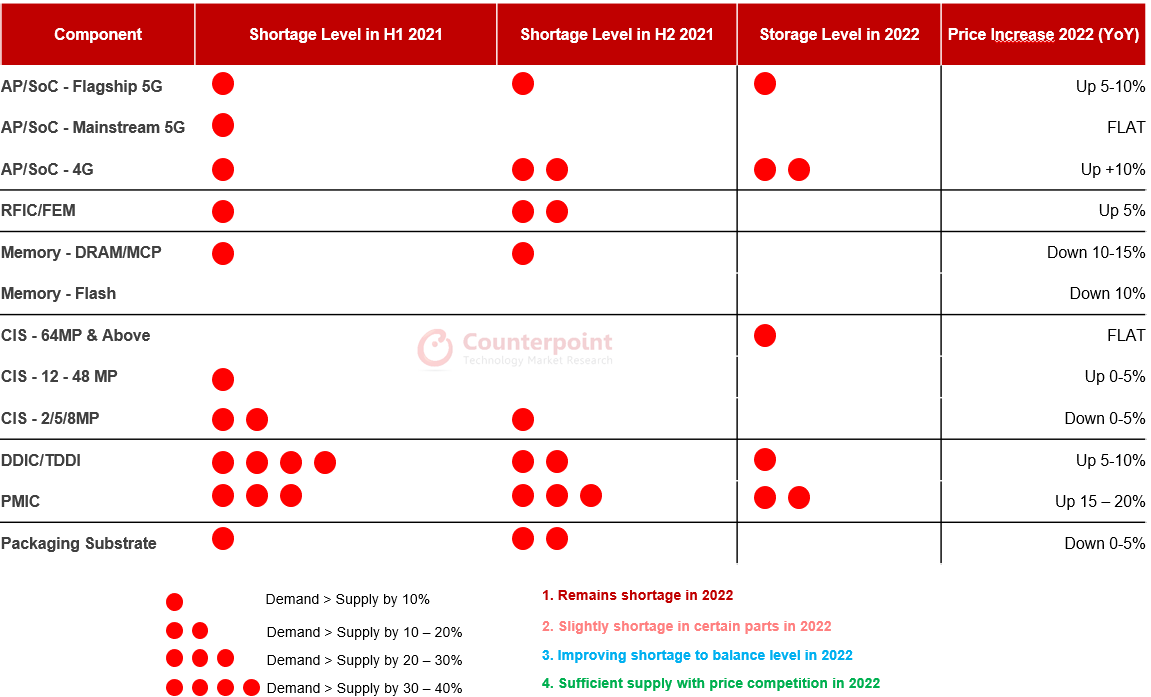Global semiconductor chip shortages are likely to continue easing during the second half of 2022 as demand-supply gaps decrease across most components, according to Counterpoint Research’s latest smartphone Component Tracker Report.
Shortages have plagued many industries for the past two years and vendors across the supply chain have spent much effort dealing with uncertainties. Since late 2021, demand-supply gaps have been shrinking, signaling a coming end to supply tightness across the broader ecosystem.
Inventory levels of 5G-related chipsets including mainstream application processors, power amplifiers, and RF transceivers have increased significantly, though some exceptions exist – for example older generation 4G processors as well as power management ICs.
Smartphone Component Shortage Outlook for 2022

Across PCs and laptops, the supply gap for the most important PC components like power management ICs, Wi-Fi and I/O interface IC, have narrowed. “We believe OEMs and ODMs will continue to accumulate component inventory to cope with uncertainties cropping up from COVID-19, with any downside risk to global shipments providing OEMs with further cushioning ”, states research analyst William Lee, who focuses on semiconductors and components.
He suggests H1 2022 will see downward shipment revisions, largely due to increasing inventory in the channel and a slowdown in consumer PC momentum. “Coupled with wafer production expansion and continuous supplier diversification, we’ve witnessed significant improvement in the component supply situation – at least in the first quarter” observes Mr. Li. “The big risk factor moving forward is the lockdowns happening across China right now, especially in and around Shanghai. But if the government can manage the outbreak and help key ecosystem players turn the corner quickly, we believe the broader semiconductor shortage will ease around late Q3, early Q4.”
“Last year, supply tightness dove-tailed with the rebound in consumer and business demand causing a lot of headaches across the supply chain. But over the past few months what we’ve seen is demand softening which has intersected nicely with higher inventories”, observes Dale Gai, director of Counterpoint Research’s semiconductor and components practice. “The issue now isn’t shortages but shock to the system from lockdowns, which we’re seeing domino across China at the moment.”
Preventing unpredictable and sharp production stoppages are short-term risks which industry and government alike have been focusing on.
Senior analyst Ivan Lam notes that, “Holding the line is a priority, especially for local governments, and we’ve seen how some companies are able to continue operations as closed-loop systems. The supply chain was lucky last year, but this latest COVID wave is a big test the country needs to manage carefully but quickly. It’s crunch time now and all eyes are on China.”


